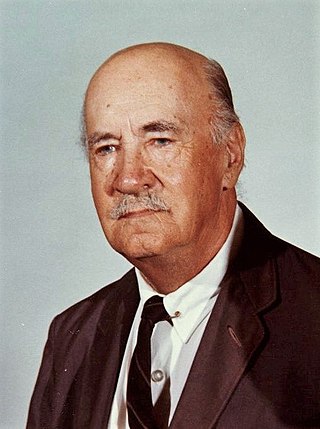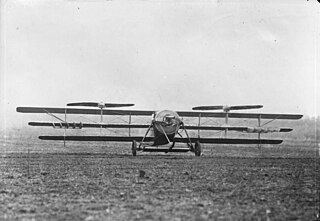
A flying car or roadable aircraft is a type of vehicle which can function both as a road vehicle and as an aircraft. As used here, this includes vehicles which drive as motorcycles when on the road. The term "flying car" is also sometimes used to include hovercars and/or VTOL personal air vehicles. Many prototypes have been built since the early 20th century, using a variety of flight technologies. Most have been designed to take off and land conventionally using a runway. Although VTOL projects are increasing, none has yet been built in more than a handful of numbers.

A tiltrotor is an aircraft that generates lift and propulsion by way of one or more powered rotors mounted on rotating shafts or nacelles usually at the ends of a fixed wing. Almost all tiltrotors use a transverse rotor design, with a few exceptions that use other multirotor layouts.

The Bristol Aeroplane Company, originally the British and Colonial Aeroplane Company, was both one of the first and one of the most important British aviation companies, designing and manufacturing both airframes and aircraft engines. Notable aircraft produced by the company include the 'Boxkite', the Bristol Fighter, the Bulldog, the Blenheim, the Beaufighter, and the Britannia, and much of the preliminary work which led to Concorde was carried out by the company. In 1956 its major operations were split into Bristol Aircraft and Bristol Aero Engines. In 1959, Bristol Aircraft merged with several major British aircraft companies to form the British Aircraft Corporation (BAC) and Bristol Aero Engines merged with Armstrong Siddeley to form Bristol Siddeley.

Igor Ivanovich Sikorsky was a Russian–American aviation pioneer in both helicopters and fixed-wing aircraft. His first success came with the Sikorsky S-2, the second aircraft of his design and construction. His fifth airplane, the S-5, won him national recognition and F.A.I. pilot's license number 64. His S-6-A received the highest award at the 1912 Moscow Aviation Exhibition, and in the fall of that year the aircraft won first prize for its young designer, builder and pilot in the military competition at Saint Petersburg. In 1913, the Sikorsky-designed Russky Vityaz (S-21) became the first successful four-engine aircraft to take flight. He also designed and built the Ilya Muromets family of four-engine aircraft, an airliner which he redesigned to be the world's first four-engine bomber when World War I broke out.
Sikorsky Aircraft is an American aircraft manufacturer based in Stratford, Connecticut. It was established by the Russian aviation pioneer Igor Sikorsky in 1923, and was among the first companies to manufacture helicopters for civilian and military use. It also produced seaplanes for passenger transport and surface vehicles such as trains and boats.
The CarterCopter is an experimental compound autogyro developed by Carter Aviation Technologies in the United States to demonstrate slowed rotor technology. On 17 June 2005, the CarterCopter became the first rotorcraft to achieve mu-1 (μ=1), an equal ratio of airspeed to rotor tip speed, but crashed on the next flight and has been inoperable since. It is being replaced by the Carter Personal Air Vehicle.

Bell Textron Inc. is an American aerospace manufacturer headquartered in Fort Worth, Texas. A subsidiary of Textron, Bell manufactures military rotorcraft at facilities in Fort Worth, and Amarillo, Texas, United States as well as commercial helicopters in Mirabel, Quebec, Canada.

Lycoming Engines is a major American manufacturer of aircraft engines. With a factory in Williamsport, Pennsylvania, Lycoming produces a line of horizontally opposed, air-cooled, four, six and eight-cylinder engines including the only FAA-certified aerobatic and helicopter piston engines on the market.

A coaxial-rotor aircraft is an aircraft whose rotors are mounted one above the other on concentric shafts, with the same axis of rotation, but turning in opposite directions (contra-rotating).

Cyril Pullin was a British inventor, engineer and motorcycle race driver. His inventions contributed to the rotary engine and the helicopter. His son was the pilot for the first successful British helicopter flight in 1938. Cyril Pullin died in 1973 aged 80.

A helicopter is a type of rotorcraft in which lift and thrust are supplied by horizontally spinning rotors. This allows the helicopter to take off and land vertically, to hover, and to fly forward, backward and laterally. These attributes allow helicopters to be used in congested or isolated areas where fixed-wing aircraft and many forms of short take-off and landing (STOL) or short take-off and vertical landing (STOVL) aircraft cannot perform without a runway.

Raúl Pateras Pescara de Castelluccio, marquis of Pateras-Pescara, was an engineer, lawyer and inventor from Argentina who specialized in automobiles, helicopters and free-piston engines.

General Corradino D'Ascanio was an Italian aeronautical engineer. D'Ascanio designed the first production helicopter, for Agusta, and designed the first motor scooter for Ferdinando Innocenti. After the two fell out, D'Ascanio helped Enrico Piaggio produce the original Vespa.

A monocopter or gyropter is a rotorcraft that uses a single rotating blade. The concept is similar to the whirling helicopter seeds that fall from some trees. The name gyropter is sometimes applied to monocopters in which the entire aircraft rotates about its center of mass as it flies. The name "monocopter" has also been applied to the personal jet pack constructed by Andreas Petzoldt.

The Carter PAV is a two-bladed, compound autogyro developed by Carter Aviation Technologies to demonstrate slowed rotor technology. The design has an unpowered rotor mounted on top of the fuselage, wings like a conventional fixed-wing aircraft mounted underneath, and a controllable pitch pusher propeller at the rear of the fuselage. Heavy weights are placed in the rotor tips to enhance rotational energy and to reduce flapping.

The Berliner Helicopter was a series of experimental helicopters built by Henry Berliner between 1922 and 1925. The helicopters had only limited controllability but were the most significant step forward in helicopter design in the US, until the production of the Vought-Sikorsky VS-300 helicopter in 1940. The 1922 flights of the Berliner and the de Bothezat H1 were the first by manned helicopters.

The GEN H-4 is a Japanese helicopter under development by GEN Corporation of Nagano. The aircraft is intended to be supplied as a kit for amateur construction.
The Arrow Coax Livella Uno is a German helicopter under development by Arrow Coax Ultra Light Helicopter of Hornhausen and introduced at the AERO Friedrichshafen airshow in 2015. The aircraft is intended to be supplied as a kit for amateur construction.
The AeroTwin AT972T is an American aircraft engine, designed and produced by the AeroTwin Motors Corporation, a subsidiary of the AirScooter Corporation of Henderson, Nevada for use in ultralight aircraft, in particular their AirScooter helicopter design.














